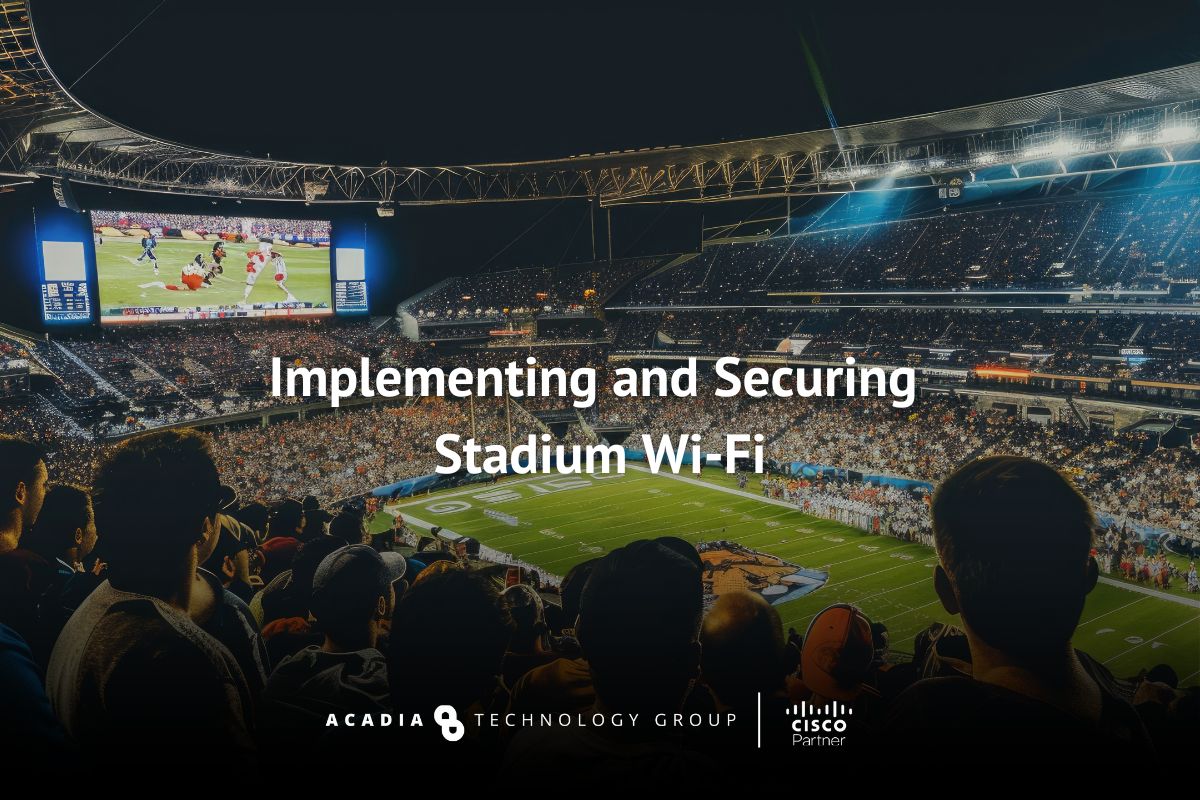
In today’s connected world, Wi-Fi is more than a convenience in stadiums—it’s a critical service that enhances operations and elevates the fan experience. From enabling POS systems and playbook access to helping fans stay connected and share moments in real time, Wi-Fi must be fast, secure, and scalable.
When the network falters or security lapses, it can disrupt everything from ticketing to broadcast feeds. That’s why the smartest stadiums are treating Wi-Fi like any other key infrastructure: thoughtfully designed, resilient, and ready for anything.
Here are four best practices to help you implement and secure stadium Wi-Fi the right way:
1. Network Segregation for Smarter Security
Segmenting your network keeps critical systems protected and helps prevent unauthorized access. For example, point-of-sale devices, team communications, and guest Wi-Fi should each operate on separate virtual networks with different levels of access and monitoring.
Solutions like Cisco Meraki make it easy to manage segmentation through cloud-based dashboards, even with lean IT teams. With secure guest access and built-in device isolation, it’s simpler to strike a balance between access and control.
2. Captive Portals That Do More
Captive portals are a valuable touchpoint—not just for compliance, but for visibility and security. Consider using them to gather meaningful, minimal data like a ticket ID or email. This helps identify bad actors early while offering insights into user behavior and traffic patterns.
You can also enable social logins to streamline access while preserving traceability. With the right configuration, portals become a win-win for security and user experience.
3. Smarter Placement of Access Points
Dense crowds and competing signals can strain even the most powerful networks. That’s why antenna placement matters. Evaluate current access point locations and look for ways to reduce interference, especially in high-traffic zones like entry gates and concession areas.
Cisco Meraki access points, for instance, are designed to be mounted above seats, under bleachers, or even on catwalks—wherever coverage is needed most. Keep in mind the number of connected devices per guest and peak usage periods, and design with scale in mind.
4. Bandwidth Controls and Content Filtering
Bandwidth shaping helps ensure the most critical services get priority. Whether it’s live-streaming or mobile concessions, you want essential operations to perform without lag.
At the same time, content filters help safeguard your environment and maintain a family-friendly atmosphere. Filtering out high-risk or inappropriate sites reduces potential vulnerabilities and supports a better overall experience for fans of all ages.
A Trusted Partner in Stadium Connectivity
At Acadia, we understand the complexity of delivering high-performance, secure Wi-Fi in large venues. We’ve helped stadiums and arenas across the Northeast design scalable, resilient networks that hold up under pressure—backed by Cisco’s proven technology and our hands-on expertise.
Whether you’re designing from the ground up or optimizing what you have, we’re here to guide the way—bringing people closer through better technology.